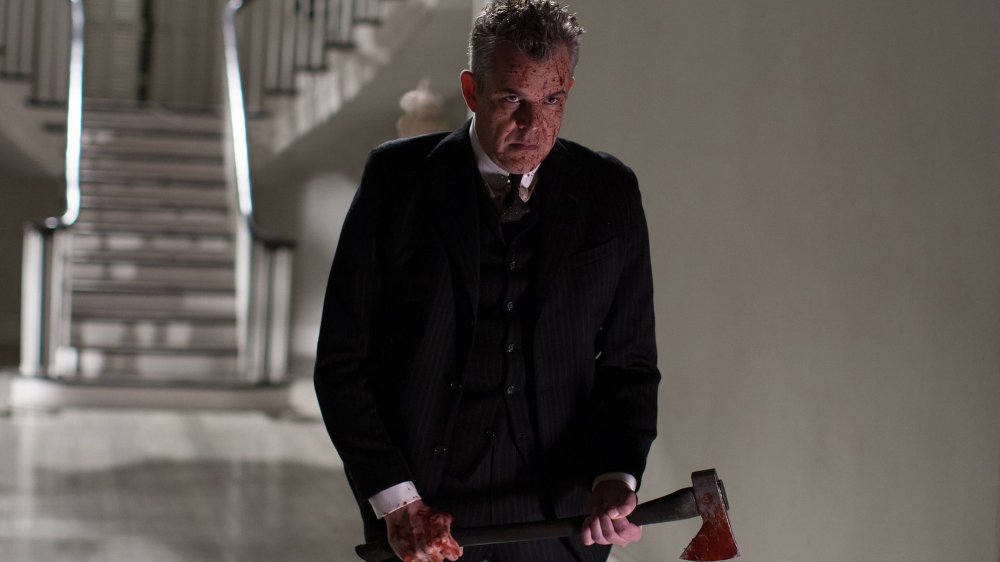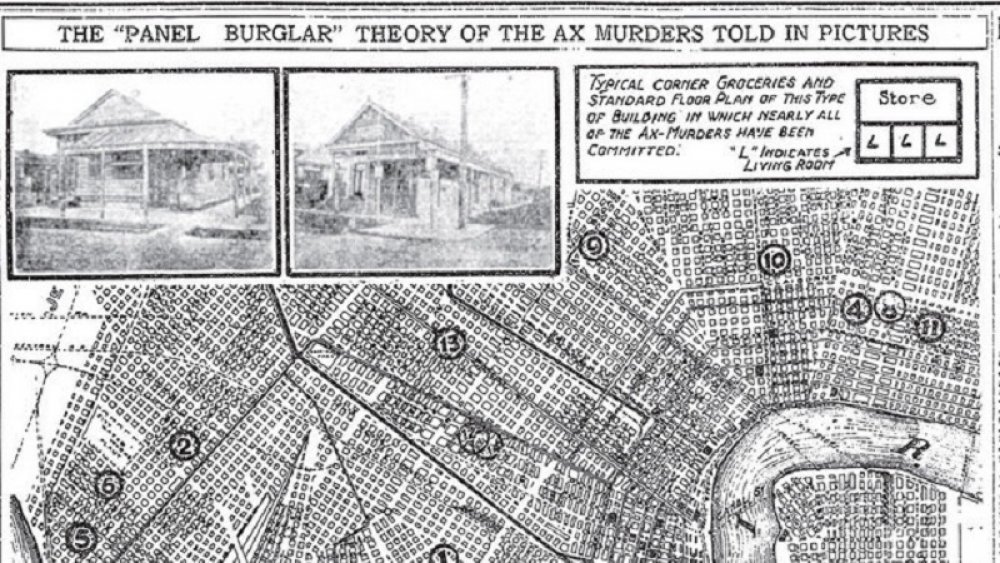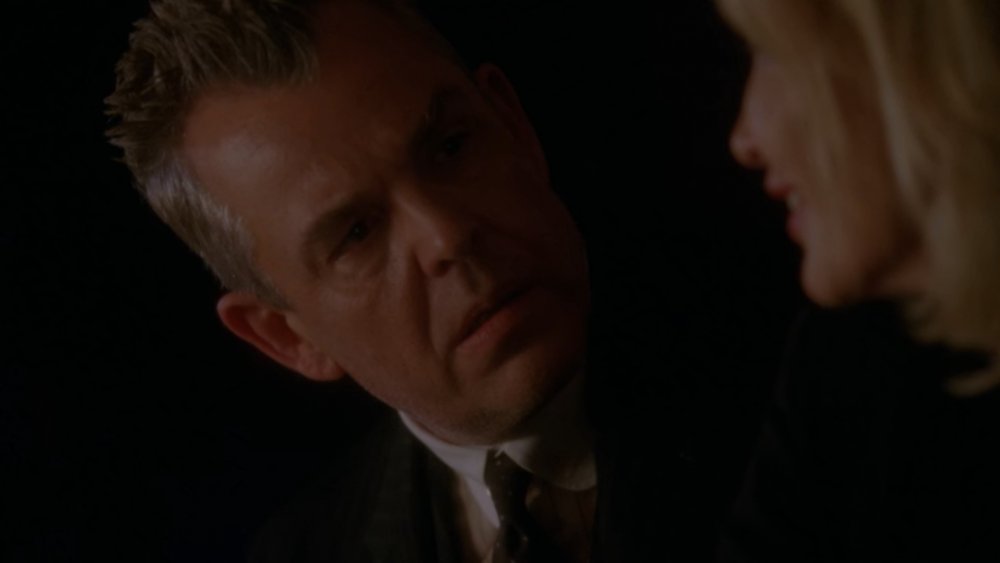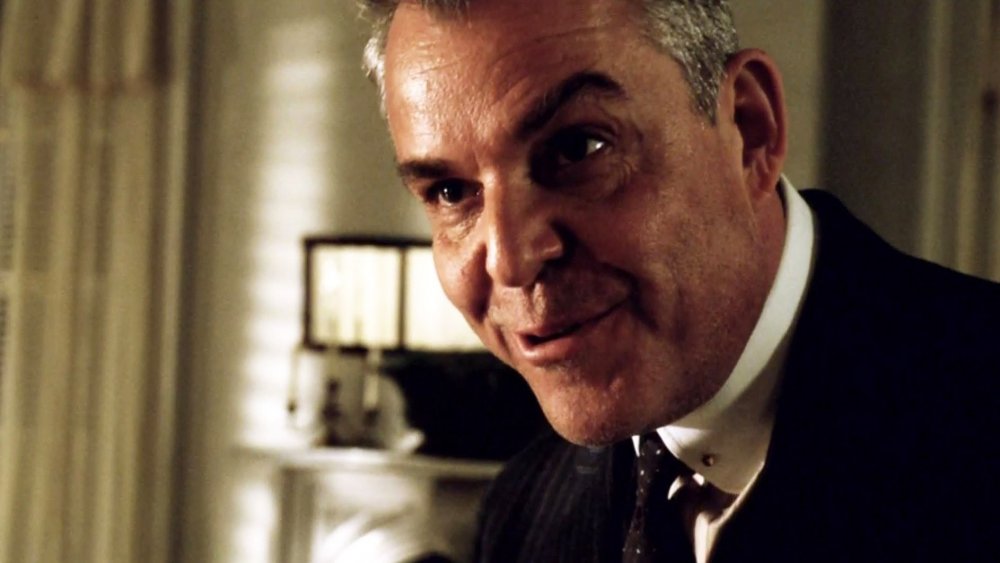The Strange True Tale Of American Horror Story's Axeman
Anyone who is a fan of the American Horror Story franchise (or any Ryan Murphy production, Ratched included) knows that the shows tend to veer toward the outlandish. Controversial moments have included serial killer clowns, minotaur sex scenes, and Jessica Lange doing a fully choreographed performance of "The Name Game." However, despite all the absurdity, quite a bit of each season is inspired — however loosely — on actual history.
One great example of this is the character of the Axeman (Danny Huston), who appears in American Horror Story: Coven. In the series, the Axeman is the ghost of a jazz-loving serial killer who terrorized New Orleans in the 1910s. Despite being a specter, he has an affair with the outgoing Supreme of the Big Easy's gaggle of witches, Fiona Goode (Jessica Lange). She ultimately decides he's a little too clingy for her, but in a cruel twist of fate, she's condemned to a personal hell of spending eternity trapped in a relationship with the romantic sociopath.
While the character of the Axeman is a mostly fictional creation, he is based on a very real, historical killer responsible for a series of horrific attacks in New Orleans. And, as is so often true, the real Axeman was scarier than his fictional counterpart.
The Axeman terrorizes the Big Easy
The real Axeman's reign of terror began with the murders of Joseph and Catherine Maggio on May 22, 1918 (via Crime and Investigation). They were discovered in their home, which the killer broke into by removing a panel from the back door. Both husband and wife had their throats slit and their heads crushed with an ax while they slept.
From then, until the fall of 1919, there were nearly a dozen additional victims of the killer who would come to be known as the Axeman of New Orleans. Even though some of the victims survived their attacks, police were unable to narrow their investigation down to a plausible suspect. Most of the attacks followed a similar pattern — the removal of a panel from the back door, an attack with an ax that belonged to the victim, and the lack of evidence that robbery was the motive. Another thing that united most of the victims was the fact that they were all grocers of Italian descent.
The fact that the Axeman primarily attacked Italian grocers isn't touched on much in the character's portrayal on American Horror Story. However, as a Smithsonian Magazine article about the murderer notes, bias against New Orlean's Italian community was longstanding. There has also been speculation that the attacks were related to the Sicilian concept of vendettas (similar to, but not the same as, the mafia), but some experts on the subject reject those theories.
There was one real-life hallmark of the Axeman that did make it into his portrayal on American Horror Story, though.
How American Horror Story incorporated the Axeman's penchant for jazz
As though the brutal murders weren't enough to grab the city's attention, the Axeman of New Orleans is perhaps best known for a peculiar letter to the editor that was published in The Times-Picayune on March 13, 1919. In it, the Axeman identified himself as not a man at all, but rather, "a demon from the hottest hell," according to Crime and Investigation. He addressed the citizens of New Orleans and made them a promise: the following Tuesday he would stalk the city looking for new victims, but would spare any house that was playing jazz.
The citizenry followed his instruction. Jazz rattled from every corner of the city. There was even a song produced for the occasion: "The Mysterious Axeman's Jazz," by Joseph Davilla. The music was enough to subdue the Axeman for the night, but not forever. A few months later, the attacks resumed, and several more victims were claimed before the year was over.
American Horror Story incorporated this event into their own version of the Axeman. In fact, it ends up being a crucial part of his story. When the Axeman calls for every house in New Orleans to play jazz, the witches of Miss Robichaux's Academy play opera in defiance. The Axeman doesn't realize he's walking into a trap when he enters the house, prepared to murder whoever is inside. The young witches use their magic to overpower him, killing the murderer and trapping his spirit in the house.
Who was the real Axeman of New Orleans?
So, who was the actual person behind the ax? To get one theory out of the way, it seems very unlikely that he was a demon from hell, as he claimed in their newspaper op-ed.
However, while there have been multiple human suspects investigated for the crimes throughout the years, none have been definitively identified as the killer. One of the most cited possibilities is a man named Joseph Mumfre. He was allegedly shot to death in Los Angeles by the widow of one of the Axeman's victims, who claims she saw the Axeman fleeing her house and recognized him as Mumfre. However, as Michael Newton outlines in his book, The Encyclopedia of Unsolved Crimes, there's actually little evidence of anybody named Joseph Mumfre being related to the crimes. There isn't even proof that the Los Angeles shooting even happened.
Although American Horror Story doesn't give viewers a wealth of information about their take on the Axeman character, they do give a rather literal interpretation to his demand for the city to play jazz music. Their Axeman is a saxophonist who used to frequent the city's jazz bars, when he wasn't horrifically murdering its citizens.
Like Jack the Ripper and Spring-heeled Jack, we'll likely never confirm who the real Axeman was. This ongoing mystery is the biggest reason why this strange case has been captivating true crime fanatics, and American Horror Story viewers, for over a hundred years.



